#100 years/Denmark/United States
Explore tagged Tumblr posts
Text









Paintings from Buckingham Palace: part I
A retexture by La Comtesse Zouboff — Original Mesh by @thejim07
100 followers gift!
First of all, I would like to thank you all for this amazing year! It's been a pleasure meeting you all and I'm beyond thankful for your support.
Spread among 13 occupied and historic royal residences in the United Kingdom, the collection is owned by King Charles III and overseen by the Royal Collection Trust. The British monarch owns some of the collection in right of the Crown and some as a private individual. It is made up of over one million objects, including 7,000 paintings, over 150,000 works on paper, this including 30,000 watercolours and drawings, and about 450,000 photographs, as well as around 700,000 works of art, including tapestries, furniture, ceramics, textiles, carriages, weapons, armour, jewellery, clocks, musical instruments, tableware, plants, manuscripts, books, and sculptures.
Some of the buildings which house the collection, such as Hampton Court Palace, are open to the public and not lived in by the Royal Family, whilst others, such as Windsor Castle, Kensington Palace and the most remarkable of them, Buckingham Palace are both residences and open to the public.
About 3,000 objects are on loan to museums throughout the world, and many others are lent on a temporary basis to exhibitions.
-------------------------------------------------------
This first part includes the paintings displayed in the White Drawing Room, the Green Drawing Room, the Silk Tapestry Room, the Guard Chamber, the Grand Staircase, the State Dining Room, the Queen's Audience Room and the Blue Drawing Room,
This set contains 37 paintings and tapestries with the original frame swatches, fully recolourable. They are:
White Drawing Room (WDR):
Portrait of François Salignan de la Mothe-Fénelon, Archbishop of Cambrai (Joseph Vivien)
Portrait of a Lady (Sir Peter Lely)
Portrait of a Man in Armour with a red scarf (Anthony van Dyck)
Portrait of Alexandra of Denmark, Queen Consort of the United Kingdom and Empress of India (François Flameng)
Green Drawing Room (GDR):
Portrait of Prince James Stuart, Duke of Cambridge (John Michael Wright)
Portrait of Frederick Henry, Charles Louis and Elizabeth: Children of Frederick V and Elizabeth of Bohemia (unknown)
Portrait of Infanta Isabel Clara Eugenia of Autria and her Sister, Infanta Catalina Micaela of Austria (Alonso Sanchez Coello)
Portrait of Princess Louisa and Princess Caroline of the United Kingdom (Francis Cotes)
Portrait of Queen Charlotte with her Two Eldest Sons, Frederick, Later Duke of York and Prince George of Wales (Allan Ramsay)
Portrait of Richard Colley Wellesley, Marquess of Wellesley (Martin Archer Shee)
Portrait of the Three Youngest Daughters of George III, Princesses Mary, Amelia and Sophia (John Singleton Copley)
Silk Tapestry Room (STR):
Portrait of Caroline of Brunswick, Princess of Wales, Playing the Harp with Princess Charlotte (Sir Thomas Lawrence)
Portrait of Augusta, Duchess of Brunswick With her Son, Charles George Augustus (Angelica Kauffmann)
Guard Chamber (GC):
Les Portières des Dieux: Bacchus (Manufacture Royale des Gobelins)
Les Portières des Dieux: Venus (Manufacture Royale des Gobelins)
Les Portières des Dieux (Manufacture Royale des Gobelins)
Grand Staircarse (GS):
Portrait of Adelaide of Saxe-Meiningen, Queen Consort of Great Britain (Martin Archer Shee)
Portrait of Augustus, Duke of Sussex (Sir David Wilkie)
Portrait of Edward, Duke of Kent (George Dawe)
Portrait of King George III of Great Britain (Sir William Beechey)
Portrait of King William IV of Great Britain when Duke of Clarence (Sir Thomas Lawrence)
Portrait of Leopold I, King of the Belgians (William Corden the Younger)
Portrait of Prince George of Cumberland, Later King George V of Hanover When a Boy (Sir Thomas Lawrence)
Portrait of Princess Charlotte Augusta of Wales (George Dawe)
Portrait of Queen Charlotte at Frogmore House (Sir William Beechey)
Portrait of Victoria of Saxe-Coburg-Saafeld, Duchess of Kent (Sir George Hayter)
State Dining Room (SDR):
Portrait of Charlotte of Mecklenburg-Strelitz, Queen Consort of the United Kingdom in Coronation Robes (Allan Ramsay)
Portrait of King George III of the United Kingdom in Coronation Robes (Allan Ramsay)
Portrait of Augusta of Saxe-Gotha, Princess of Wales (Jean-Baptiste Van Loo)
Portrait of Caroline of Ansbach when Princess of Wales (Sir Godfrey Kneller)
Portrait of Frederick, Princes of Wales (Jean-Baptiste Van Loo)
Portrait of King George II of Great Britain (John Shackleton)
Portrait of King George IV of the United Kingdom in Garther Robes (Sir Thomas Lawrence)
Queen's Audience Room (QAR):
Portrait of Anne, Duchess of Cumberland and Strathearn (née Anne Luttrel) in Peeress Robes (Sir Thomas Gainsborough)
Portrait of Prince Henry, Duke of Cumberland and Strathearn in Peer Robes (Sir Thomas Gainsborough)
London: The Thames from Somerset House Terrace towards the City (Giovanni Antonio Canal "Canaletto")
View of Piazza San Marco Looking East Towards the Basilica and the Campanile (Giovanni Antonio Canal "Canaletto")
Blue Drawing Room (BDR)
Portrait of King George V in Coronation Robes (Sir Samuel Luke Fildes)
Portrait of Queen Mary of Teck in Coronation Robes (Sir William Samuel Henry Llewellyn)
-------------------------------------------------------
Found under decor > paintings for:
500§ (WDR: 1,2 & 3)
1850§ (GDR: 1)
1960§ (GDR: 2 & 3 |QAR 3 & 4)
3040§ (STR, 1 |GC: 1 & 2|SDR: 1 & 2)
3050§ (GC:1 |GS: all 10|WDR: 4 |SDR: 3,4,5 & 6)
3560§ (QAR: 1 & 2|STR: 2)
3900§ (SDR: 7| BDR: 1 & 2|GDR: 4,5,6 & 7)
Retextured from:
"Saint Mary Magdalene" (WDR: 1,2 & 3) found here .
"The virgin of the Rosary" (GDR: 1) found here .
"The Four Cardinal Virtues" (GDR: 2&3|QAR 3 & 4) found here.
"Mariana of Austria in Prayer" (STR, 1, GC: 1 & 2|SDR: 1 & 2) found here.
"Portrait of Philip IV with a lion at his feet" (GC:1 |GS: all 10|WDR: 4 |SDR: 3,4,5 & 6) found here
"Length Portrait of Mrs.D" (QAR: 1 & 2|STR: 2) found here
"Portrait of Maria Theresa of Austria and her Son, le Grand Dauphin" (SDR: 7| BDR: 1 & 2|GDR: 4,5,6 & 7) found here
(you can just search for "Buckingham Palace" using the catalog search mod to find the entire set much easier!)
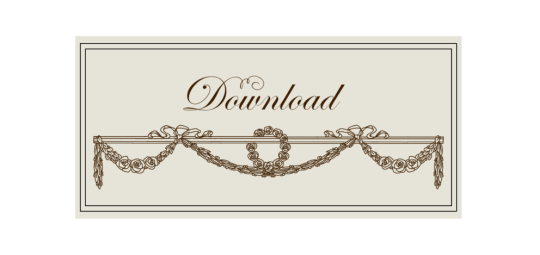
Drive
(Sims3pack | Package)
(Useful tags below)
@joojconverts @ts3history @ts3historicalccfinds @deniisu-sims @katsujiiccfinds @gifappels-stuff
-------------------------------------------------------
#the sims 3#ts3#s3cc#sims 3#sims 3 cc#sims 3 download#sims 3 decor#edwardian#rococo#baroque#renaissance#buckingham#buckingham palace#royal collection trust#wall decor
131 notes
·
View notes
Text
[MASTERLIST] Estonia and [country] official 100 year diplomatic timelines + extra online sources
For personal use and for anyone else who may wish to find these resources, will work to add translated notes in the future! Feel free to ask if you want me to try and look for any for a country I missed as well.
Always more to be added, SENDING NEW SOURCES IS ENCOURAGED!
Latvia
---
Lithuania
---
Denmark
Diplomatic relations 100 ESTONIAN
Dannebrog 800: The Story of Denmark and Estonia PDF (english)
Sweden
Diplomatic relations 100 ESTONIAN/SWEDISH
Norway
Diplomatic relations 100 ESTONIAN/NORWEGIAN
Finland
Diplomatic relations 100 ESTONIAN/FINNISH
Poland
Diplomatic Relations 100 ESTONIAN
Diplomatic Relations 100 POLISH
UK
Diplomatic relations 100 ESTONIAN
100 Years of Diplomatic Relations PDF
Ireland
Diplomatic relations 30 ESTONIAN
Diplomatic relations 30 ENGLISH
Japan
Diplomatic relations 100 ESTONIAN
Diplomatic Relations 100 JAPANESE
Scotland
Burns night in Estonia: Cultural Ties Article
Netherlands
Diplomatic Relations 100 ESTONIAN
Diplomatic relations 100 DUTCH
Belgium
Diplomatic Relations 100 ESTONIAN
Germany
Diplomatic Relations 100 ESTONIAN
Diplomatic Relations 100 GERMAN
United States of America
Diplomatic Relations 100 ESTONIAN
Diplomatic Relations 100 ENGLISH
France
Diplomatic Relations 100 ESTONIAN
Diplomatic Relations 100 FRENCH
Italy
Diplomatic Relations 100 ESTONIAN
Diplomatic Relations 100 ITALIAN
Spain
Diplomatic Relations 100 ESTONIAN
Diplomatic Relations 100 SPANISH
#estonia#estonian history#and because i want hetalians to see this too:#hetalia#hws estonia#aph estonia#important#masterlist#TBA
32 notes
·
View notes
Note
Hey, so as a person who has in my unpublished works a story wherein APH Greenland is minorly featured, after I saw your post complaining about Greenland's current characterisation in fanworks, I realised that my story 100% fits all the things you were complaining about. And if it's not too much trouble how would you characterise Greenland in a way that is less problematic?
Or do you have any reccomendations for resources I can use to educate myself about Greenlandic culture?
So, I will preface this with the following:
I AM NOT INDIGENOUS. I AM NOT INUK. YOU SHOULD GO ASK SOMEONE INDIGENOUS OR BETTER YET, SOMEONE WHO IS GREENLANDIC INUIT.
However, in this post, I will primarily give some guidelines that are generally applicable to any nation personification of color that has experienced colonialism/imperialism by a Western nation and is still dealing with its legacy. Keep in mind that what you're asking for is a lot, however- we're touching on topics of national anthropomorphizations in political cartoons, the depiction of the colonized, particularly the indigenous, and the relationship between the colonized and the colonizer.
Don't make Greenland America and Canada's relative.
Don't make Greenland Denmark's kid, biological or otherwise.
Don't use sensitive contemporary issues in Greenland for fandom content.
Don't Make Greenland America and Canada's Relative
Every time I've seen this come up, this is usually justified one of two ways-
a) Greenland is related to America and Canada because the Vikings set up the first European settlements in continental North America, so they would be related via their Norse heritage. b) Greenland is related to America and Canada because America and Canada have a native parent, and Greenland is a sibling of that native parent.
To head things off- The first one is bad. See my next section for the issues of making Greenland a child of the Nordics/Nordic ancestors.
The second one almost always carries the implication of that the native parent of America and Canada is some kind of nebulous pan-American "APH Native America" personification; the issues with having the many indigenous peoples of the Americas as similar and interchangeable enough to warrant only one personification to represent them all are obvious, I should hope.
The slightly more plausible alternative is that America and Canada's native parent represents some Inuit group, and through that, Greenland is their sibling. Even if more plausible, we run into the same issue of turning a group into a monolith- there are many different Inuit groups, all with their own unique histories and cultures. Though Inuit groups may be more related than all Indigenous Americans to each other, they are still not a monolith, and determining their relationships to each other shouldn't be resolved with a blanket solution of "they're all related, nuff said."
If we want to dig into the weeds of historical accuracy, it makes no sense for America to have Inuit heritage, seeing as the United States began as the Thirteen Colonies in the Eastern Seaboard of the modern United States which doesn't overlap with the traditional lands of the Inuit. The Alaska Purchase was not made until 1867, hundreds of years after the establishment of the Thirteen Colonies.
I would also like to point out another issue I’ve seen with many “Auntie/Uncle Greenland depictions” in the fandom. Whenever you do see such depictions of Greenland in the fandom, almost never do we see the creator of such interpretations shedding light on any other indigenous characters (particularly ones not related to the USA and Canada). Therefore, such depictions are exceptionalizing and exalting an indigenous character above all other indigenous characters because they have more of a connection to major Western countries.
Overall summary: The primary issue with making Greenland related to America and Canada is that Greenland is never allowed to exist outside of their links to these two. If you want to depict Greenland with respect, the most basic thing you can do is to not reduce Greenland into a tool for you to better characterize America and Canada and flesh out their background.
Don't make Greenland Denmark's Child, Biological or Otherwise
TW: racist caricatures of black, Latino, Native American, and Asian people
So first some quick historical background: Norse settlement of Greenland began around the 900s-1100s and died out sometime between 1450 and 1500 due to a variety of environmental and sociopolitical reasons. The surviving Norse settlers most likely either left or assimilated with the local Inuit populations, so there is some genetic legacy, but 85-90% of the population of Greenland today considers themselves Greenlandic Inuit.
For the following centuries, there were sporadic interactions between European whalers and the local Inuit. It was only until 1721 that another attempt at colonization was made, this time by the missionary Hans Egede, who founded a trading company and Lutheran mission near present day Nuuk, with the express permission of the Kingdom of Denmark-Norway.
Greenland took on a special status in both Danish policy and imagination, a far-off land that was "vulnerable" to other nation's influences and in need of Danish protection. In line with that thinking, the Danish state held an exclusive monopoly on Greenland's resources and all trade with Greenlanders. It pressured Greenlandic Inuit to stay in their occupations of hunting and fishing so that Denmark could maintain access to resources Greenland provided, mainly animal products from local wildlife the Inuit hunted.
Additionally, the Danish also tightly regulated interactions between the Danish colonial population and the local Inuits. For a time, intermarriage was strictly controlled, limited to only Danish men and Greenlandic women of mixed descent and had to be approved by the colonial administration. When the US wanted to build military bases on Greenland for military purposes during WW2, a major concern of Greenlandic authorities was minimizing contact between the US soldiers and the local Inuits.
Of course, Greenland didn’t stay this way forever. Against Denmark’s wishes, Greenland did open up and become further integrated into the global economy and order of nations, and to this day a lot of Greenlanders have a Danish ancestor somewhere in their family tree.
However, to make Greenland (substantially) related to the Norse is to do a disservice to the hundreds of years of Greenlandic Inuit culture that already existed and then continued to thrive for hundreds of years in the absence of continued Nordic contact and influence. It implies that the ethnogenesis of the Greenlandic Inuit was kicked off by the Norse settlers, when in reality, the Greenlandic Inuit are largely descended from the native Thule people and later waves of migration of other Inuit people from modern day Nunavut and Nunavik. To make Greenland the child of Denmark is worse, and stands in stark contrast to the fact that compared to other nations and their settler colonies (think, England and America), Denmark heavily controlled Danish migration to Greenland and wanted to keep Greenland isolated and contained.
Now, moving past the issue of historical accuracy, there's been a long history in political cartoons starring national anthropomorphizations of allegorizing international relationships as familial relationships, or "mentor-mentee" relationships, especially when it comes to colonizer-colony relationships.

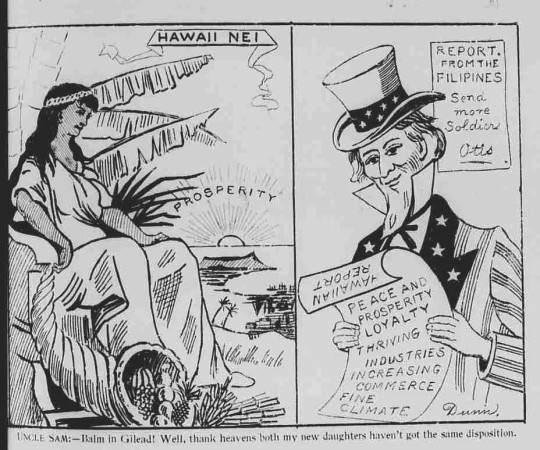
REPORT FROM THE FILIPINES Send more soldiers -Otis Uncle Sam: Balm in Gilead! Well, thank heavens both my new daughters haven't got the same disposition.

'School Begins', cartoon of Uncle Sam teaching a class in civilisation to pupils labelled 'Philippines', 'Hawaii', 'Porto Rico' and 'Cuba'
In these cartoons, the colonized is portrayed as child-like, infantile, in need of the US's benevolent guidance to be "civilized." After all, if the relationship between the colonizer and its colonial possessions was like that of a parent and their children (or a teacher and their students)- well, children need their parents, so therefore, the colonies need the colonizer and its guidance, right? By doing so, it portrays the relationship between the colonizer and its colonies as a necessary, benevolent one, one done for the benefit of the colony, and masks the inherently exploitative, unequal nature of colonialism.
To make Denmark a parental influence on Greenland, then, is to replicate the same paternalistic attitude Denmark took to Greenland as a colonial possession in need of guidance and direction, and possibly whitewashing the toll Danish colonization has taken on Greenland. Even depictions of Denmark and Greenland that emphasize their “little brother/big brother” relationship are problematic, because they fall into the same colonial rhetoric of Greenland "needing" Denmark's civilizing guidance.
Moreover, sensitivity is another concern for depictions of Greenland. At the risk of speaking for groups I do not belong to, having a child Greenland be raised by Denmark and the other Nordics (esp if Greenland has a negative relationship w them) hews a little too closely to the real life kidnapping of Indigenous children from their families to be raised instead by white families, in an attempt to remove them from their heritage and culture. Unless you're actually Greenlandic Inuit or indigenous, I don't think this is your story to tell.
Don't Use Sensitive Contemporary Issues in Greenland for Fandom Content
Don't use sensitive contemporary issues for fandom content, especially as an outsider. Don't be like the person I saw making angst headcanons around Greenland's high suicide rate.
---
Recommended Reading
youtube
This video is a great introduction to Danish colonization of Greenland, and how I began my dive into Greenlandic history. Bear in mind that this is a 25 minute long video, so it's compressing a lot, but it's a jumping off point, not the end-all be all. Content warnings should be in the beginning of the video.
Phasing out the Colonial Status of Greenland by Erik Beukel
This is a report commissioned by the Danish government and Greenlandic Home Rule analyzing the period between 1945 and 1954, where Greenland's status was changed from that of a colony to an equal part of the Kingdom of Denmark. It's a series of political science essays looking at this period, but I found Chapter 2 the most useful, as it provides an overview of the relevant historical background factors in the relationship between Greenland and Denmark. Warning for some dated language (mostly because it uses Esk*mo at certain points) but otherwise there's not really any content warnings.
Worldviews of the Greenlanders: An Inuit Arctic Perspective by Brigitte Sonne
I haven't fully read this book so I can't totally vouch for this, but given the difficulty of accessing academic material of Greenland (especially as someone who doesn't speak or read Danish), this does fill in some much needed gaps in perspectives on Greenland. I realize the inherent problems of needing to read about Inuit perspectives in a book compiled by an outsider academic as well as the issues with the field of ethnography as a whole, but this may still be useful to some!
Articles I enjoyed that look at Greenlandic history and contemporary issues:
The Arctic Suicides: It's Not the Dark that Kills you
A Brief History of the Indignities Heaped Upon Greenland
How a failed social experiment in Denmark separated Inuit children from their families
#hetalia#ask#hws greenland#// long post#historical hetalia#wowee this took a while!#// colonialism#// genocide#// suicide#recs#praying-mantis-knight
57 notes
·
View notes
Text
As environmental, social and humanitarian crises escalate, the world can no longer afford two things: first, the costs of economic inequality; and second, the rich. Between 2020 and 2022, the world’s most affluent 1% of people captured nearly twice as much of the new global wealth created as did the other 99% of individuals put together, and in 2019 they emitted as much carbon dioxide as the poorest two-thirds of humanity. In the decade to 2022, the world’s billionaires more than doubled their wealth, to almost US$12 trillion. The evidence gathered by social epidemiologists, including us, shows that large differences in income are a powerful social stressor that is increasingly rendering societies dysfunctional. For example, bigger gaps between rich and poor are accompanied by higher rates of homicide and imprisonment. They also correspond to more infant mortality, obesity, drug abuse and COVID-19 deaths, as well as higher rates of teenage pregnancy and lower levels of child well-being, social mobility and public trust. Bullying among schoolchildren is around six times as common in more-unequal countries. The homicide rate in the United States — the most unequal Western democracy — is more than 11 times that in Norway. Imprisonment rates are ten times as high, and infant mortality and obesity rates twice as high. These problems don’t just hit the poorest individuals, although the poorest are most badly affected. Even affluent people would enjoy a better quality of life if they lived in a country with a more equal distribution of wealth, similar to a Scandinavian nation. They might see improvements in their mental health and have a reduced chance of becoming victims of violence; their children might do better at school and be less likely to take dangerous drugs. The costs of inequality are also excruciatingly high for governments. For example, the Equality Trust, a charity based in London, estimated that the United Kingdom alone could save more than £100 billion ($126 billion) per year if it reduced its inequalities to the average of those in the five countries in the OECD that have the smallest income differentials — Denmark, Finland, Belgium, Norway and the Netherlands. And that is considering just four areas: greater number of years lived in full health, better mental health, reduced homicide rates and lower imprisonment rates. Many commentators have drawn attention to the environmental need to limit economic growth and instead prioritize sustainability and well-being. Here we argue that tackling inequality is the foremost task of that transformation. Greater equality will reduce unhealthy and excess consumption, and will increase the solidarity and cohesion that are needed to make societies more adaptable in the face of climate and other emergencies. (...)
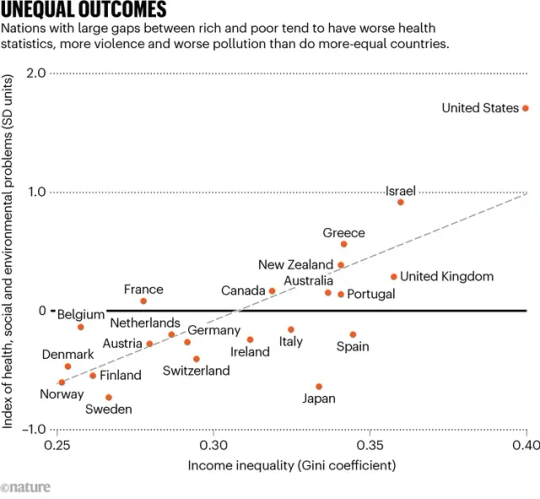
The scientific evidence is stark that reducing inequality is a fundamental precondition for addressing the environmental, health and social crises the world is facing. It’s essential that policymakers act quickly to reverse decades of rising inequality and curb the highest incomes. First, governments should choose progressive forms of taxation, which shift economic burdens from people with low incomes to those with high earnings, to reduce inequality and to pay for the infrastructure that the world needs to transition to carbon neutrality and sustainability. (...) International agreements to close tax havens and loopholes must be made. Corporate tax avoidance is estimated to cost poor countries $100 billion per year — enough to educate an extra 124 million children and prevent perhaps 8 million maternal and infant deaths annually. (...) Bans on advertising tobacco, alcohol, gambling and prescription drugs are common internationally, but taxes to restrict advertising more generally would help to reduce consumption. Energy costs might also be made progressive by charging more per unit at higher levels of consumption. Legislation and incentives will also be needed to ensure that large companies — which dominate the global economy — are run more fairly. For example, business practices such as employee ownership, representation on company boards and share ownership, as well as mutuals and cooperatives, tend to reduce the scale of income and wealth inequality. (...)
More in-depth explanation for the reasons behind the fragment I've included in this post can be found in the article linked above, as well as the sources for all the claims.
#sustainability#climate emergency#environmentalism#environment#capitalism#anticapitalism#science#💬#social science#anti capitalism#anti advertising
7 notes
·
View notes
Text
The consequences of the 2024 US presidential election will be felt from Washington, DC to Warsaw, Illinois. But they will also be felt in Warsaw, Poland.
The United States is, despite the many pronouncements of its decline, powerful and influential enough for its presidential election result to be felt around the world. Central and Eastern Europe is no exception to this. It is, in fact, a region where this is perhaps particularly true.
The first and most obvious way in which the 2024 presidential election will matter for Central and Eastern Europe is Russia’s war in Ukraine. The Democratic candidate, Vice President Kamala Harris, has essentially said she would continue US President Joe Biden’s policy. She is committed to continuing to provide assistance to Ukraine. The Republican candidate, former US President Donald Trump, has, by comparison, repeatedly questioned US aid to Ukraine, and derided Ukrainian President Volodymyr Zelenskyy as a “salesman” who “walks away” with billions every time he comes to the United States.
Much has been made of Trump’s stated fondness for Russian president Vladimir Putin, but just as salient was the reason for Trump’s first impeachment: he was accused of trying to extort Zelensky by using the carrot of lethal aid to entice his Ukrainian counterpart to open an investigation into his political rival, Biden.
We should expect Trump’s skepticism for NATO to carry into a second term, too. (Harris, in the debate with Trump, warned that if Putin is able to take Kyiv, “Putin would be sitting in Kyiv with his eyes on the rest of Europe. Starting with Poland. And why don’t you tell the 800,000 Polish Americans right here in Pennsylvania how quickly you would give up for the sake of favor and what you think is a friendship with what is known to be a dictator who would eat you for lunch?”)
More broadly, Harris’s record as a senator and as vice president suggests that she would view the countries in the region as allies. She would likely continue to offer some support to those trying to, for example, protect minority rights or advocate for democratic norms in the region.
Trump would be more disruptive. For one thing, Trump is campaigning on the most aggressive tariffs — taxes on imported goods — in almost 100 years, and is, per the Washington Post, “preparing an attack on the international trade order that would probably raise prices, hurt the stock market and spark economic feuds with much of the world.” The new tariffs would likely hurt global trade and financial flows between Europe and the United States. The European Union and the United States could very well find themselves in a trade war, the losers of which would likely be American and European businesses and consumers.
And Trump’s potential changes to immigration could impact families from Central and Eastern Europe, too: he’s proposing making it more difficult for family-based migration and has, in the past, tried to slash not only undocumented, but also legal migration. (Trump has also complained that the United States needs more migration from certain countries, which he has deemed “nice,” like “Denmark” and “Switzerland.”)
When I think about what another Trump term would mean for Central and Eastern Europe, though, the thing I think about the most are outlets like this one. Journalism is under pressure from governments across the region. That is, in my view, something that US leadership has a responsibility to push back on. When you claim to be allies based on shared democratic values, all parties involved should try to push each other to actually uphold those values. I do not think that we can expect this under Trump, who called the press the “enemy of the people” and “just bad people” at a rally in Arizona last week. His first term was marked by attacks on journalists, and particularly women journalists. I think it will be worse for journalists here in the United States and in Central and Eastern Europe, too.
And I think that we can extend this to those who speak up for democratic norms and minorities more generally, like already maligned NGO workers and activists. For example, in 2022 USAID announced that it was “supporting new locally-driven initiatives in Central Europe with the goal of strengthening democratic institutions, civil society, and independent media, which are all pillars of resilient democratic societies.” It is unclear to me that that support would continue in a Trump administration. (This is separate from development assistance to Europe and Eurasia region; Trump made dramatic cuts to foreign assistance the last time he was in office.)
Trump, in his debate with Harris, said, in response to the charge that world leaders were laughing at Trump, that Hungarian Prime Minister Viktor Orban likes him. “Look, Viktor Orbán said it. He said, ‘The most respected, the most feared person is Donald Trump. We had no problems when Trump was president.’” And it is true that Orbán received less criticism from the United States when Trump was president. But whether that is good for Americans and Hungarians is another matter entirely.
Having a president who believes in freedom of the press isn’t enough, of course, to magically make conditions for journalists better. Having a president who believes in liberal democracy in theory doesn’t mean that all its values are always practiced, or that democratic norms in Central and Eastern Europe will be respected. But not having one is enough to make things worse. And, in a way, the same could be said of Harris and Trump’s respective victories for Central and Eastern Europe more generally: On questions ranging from national security to democracy, she won’t magically make everything better, but he can quite quickly make matters worse.
3 notes
·
View notes
Text
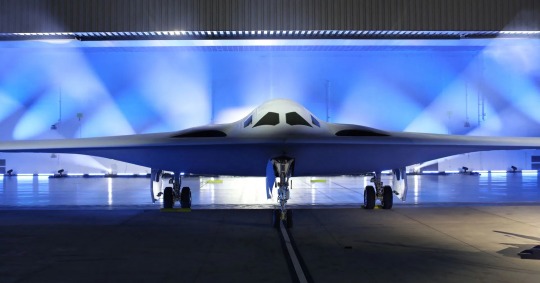
Pentagon confirms start of serial production of the B-21 Raider stealth bomber
The U.S. Air Force recently confirmed that the secret plane continued flight tests at Edwards Air Base.
Fernando Valduga By Fernando Valduga 01/22/2024 - 21:59in Military
After the first flight of the newest stealth bomber of the U.S. Air Force, the Pentagon formally approved the B-21 Raider program to start production, the main Pentagon acquisition officer confirmed today.
"The production of the B-21 'Raider' stealth bomber is advancing. Last fall, based on the results of the ground and flight tests and the team's mature plans for manufacturing, I gave the green light to start producing B-21 at a low rate," the Undersecretary of Defense for Acquisition and Support, William LaPlante said in a statement.
"One of the main attributes of this program has been the conception for production from the beginning - and in scale - to provide a credible impediment to opponents. If you don't produce and put in the field for fighters on a large scale, the capacity doesn't really matter," he added.
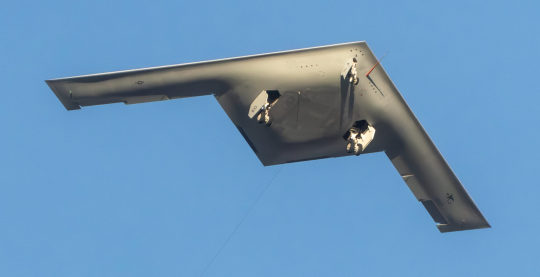
First flight of the B-21 Raider.
More details about the value of the contract signature and the delivery dates were not disclosed. The news of the beginning of the bomber's production was first reported by Bloomberg.
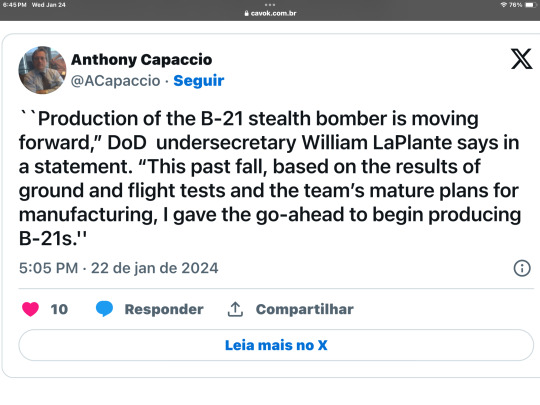
Set to replace the B-2 Spirit and the B-1 Lancer, the nuclear-capable Raider is designed for long-range missions with stealth resources that can help you escape enemy air defenses. The U.S. Air Force initially plans to buy at least 100 bombers and put them into service in the mid-2020s.
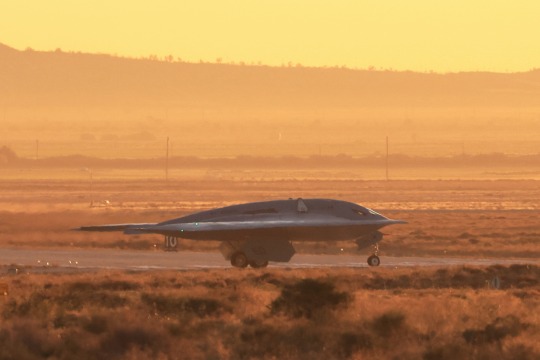
The Pentagon linked the concession of the program's initial low-rate production contract to the aircraft's first flight, which took place in November and was followed by at least one other test flight at Edwards Air Base. However, the executives of the aircraft manufacturer, Northrop Grumman, have long warned that the first batches of production may not be profitable for the company due to inflationary impacts.
The defense contractor is expected to disclose its year-end profits for 2023 on January 25, where investors will probably also be aware of updates on the LGM-35A Sentinel ICBM, the company's other nuclear modernization program that authorities released last week that suffered a "critical cost violation".
Source: Breaking Defense
Tags: Military AviationB-21 RaiderNorthrop GrummanUSAF - United States Air Force / U.S. Air Force
Sharing
tweet
Fernando Valduga
Fernando Valduga
Aviation photographer and pilot since 1992, he has participated in several events and air operations, such as Cruzex, AirVenture, Dayton Airshow and FIDAE. He has works published in specialized aviation magazines in Brazil and abroad. He uses Canon equipment during his photographic work in the world of aviation.
Related news
MILITARY
B-1B bombers perform joint training with Singapore and Japan in the Indo-Pacific
22/01/2024 - 21:00
SAAB
Saab signs GlobalEye support contract with the United Arab Emirates
22/01/2024 - 19:27
HELICOPTERS
First KAI LAH helicopter will be delivered to the South Korean army this year
22/01/2024 - 17:00
ARMAMENTS
German Air Force reinforces arsenal with Brimstone missiles for its Eurofighters
22/01/2024 - 16:00
MILITARY
Denmark will buy long-range drones for surveillance operations in the Arctic
22/01/2024 - 14:00
MILITARY
Romanian pilot performs inaugural flight at the F-16 European Training Center
22/01/2024 - 08:42
16 notes
·
View notes
Text
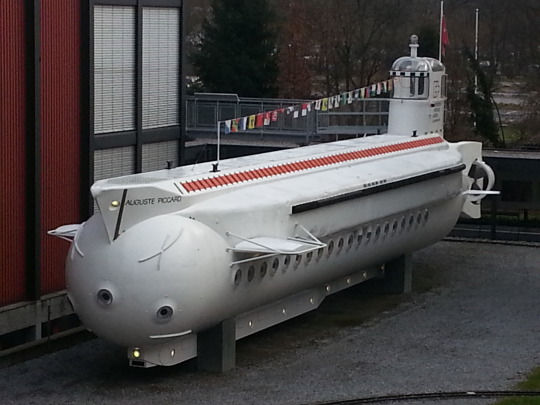

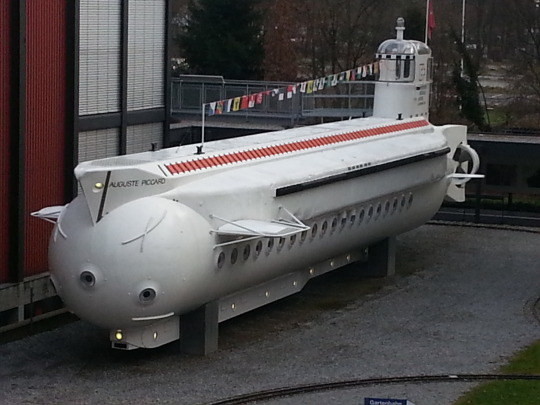
National Submarine Day
Pay tribute to the many souls lost beneath the ocean, and consider the game-changing effects of the invention of the Submarine on our technology, warfare, and more.How low… can you go? How low… can you go? When it comes to National Submarine Day, it’s easy to believe that it’s pretty low.
History of National Submarine Day
Some people may find it hard to believe that the first recorded submersible was built by Cornelius Drebbel in 1620! This underwater ship was apparently built for James I of England for use in London, although why anyone would want to plunge beneath the surface of a 17th century Thames is difficult to understand!
The original versions of submarines were built to hold only one or two passengers, but modern versions are made to hold up to 100 passengers. Typically, since this is a very dangerous job, militaries will use as few people on their crew as possible.
April 11, 1900 is the date when the United States government purchased its first commissioned submarine, named the USS Holland. The USS Holland was the United States Navy’s first commissioned submarine, named for her Irish-American inventor, John Philip Holland. (It is important to note that this was not actually the first submarine of the US Navy, which was the 1862 Alligator.) But this boat was originally laid down as Holland VI, and launched on 17 May 1897.
Having played major parts in military operations for over a century, today’s submarines are, of course, far more sophisticated than that particular oar-powered contraption. The amount of expertise that goes into their design, construction, maintenance and operation is quite staggering, especially when you take into account the inclusion of navigation and communication networks, sensors, armaments and weaponry, and powerful propulsion systems. This is all in addition to the most important part of a submarine: a large number of rigorously trained and highly skilled men and women who are often putting their lives on the line for their countries!
In honor of that first commissioning of the USS Holland in 1900, National Submarine Day was established to be celebrated each year on the anniversary of this date!
How to Celebrate National Submarine Day
Today’s observance of National Submarine Day can take on many forms. Here are some ideas for making plans, but feel free to go far beyond and get creative with some of your own ideas too!
Visit a Submarine
Those who are serious about observing National Submarine Day might want to consider taking a road trip to a museum or other exhibit where a submarine is accessible to the public. Smaller retired subs often find themselves put on display for adults and children to see and experience what it is really like, in places like children’s museums and science exhibits.
Various submarine tours can be found in port cities in the United States and other countries, including Australia, Canada, the United Kingdom, Denmark, and many other European countries.
Learn Fun Facts About Submarines
In celebration of National Submarine Day, raise awareness for the day by learning about and sharing some of these interesting bits of trivia:
Submarines were used in the American Civil War. The South built small steam-powered subs called “Davids” to fire torpedoes at the ships from the North.
The furthest dive completed by a submarine was 35,858 feet.
The world’s first submarine for the military was designed in the US and built in 1776, the same year the US gained its independence.
The periscope, which is a vital tool for submarines, was invented in 1854 by a Frenchman.
Check Out the Submarine Force Library & Museum
In the US, the only submarine museum in the country that is run by the US Navy is located in the New England state of Connecticut. At the Submarine Force Library & Museum, the first nuclear powered submarine, the USS Nautilus, resides right outside the back doors of the building. Free tours of the sub are given for individuals, families, school trips and more. Scavenger hunts are also a fun way for folks to participate, especially in celebration of National Submarine Day!
Take a Moment to Consider Submarines
In celebration of National Submarine Day, perhaps it would be important to simply take some time to think about and consider this special feat of engineering. Take a moment to think about the ingenuity and majesty of the mighty submarine itself. Celebrate its place in the modern world. Or imagine what these submarines might be like in a hundred years’ time!
But perhaps most importantly, this would be an important time to take a moment to think about those whose lives have been lost at sea over the years and pay tribute to the courage of those who made a sacrifice, whether in the name of their countries or for increased knowledge and science.
Source
#Mesocaph#August Piccard#Verkehrshaus der Schweiz#Swiss Museum of Transport#Luzern#Lucerne#Switzerland#tourist attraction#landmark#technology#engineering#Copenhagen#København#Denmark#Atlantic Ocean#National Submarine Day#NationalSubmarineDay#11 April#travel#vacation#Europe#summer 2006#original photography#cityscape#architecture
4 notes
·
View notes
Text

I stand as firmly against Genocide as I do Antisemitism and Islamophobia. I understand the desire for a safe place for Jewish people to exist in this world. …But I, for the life of me, can't see the justification of the IDF and the state of Israel's actions against the indigenous Palestinian people for the last 75+ years. Humanity has seen apartheid states born of settler colonialism before, and Israel is just such a state. I am a citizen of a county that was founded with labor born from the horrors of chattel slavery on land stolen from the indigenous people who lived here for centuries. The city in which I live has a shameful history with lynching black people. I do not take for granted the history of the land and people who existed here before me. It informs how I view all the aspects of injustice.
There are a lot of calls for condemnation of the actions of Hamas on October 7, 2023. I can understand the immediate response. What I wonder is, given the context of those acts, however despicable or violent, they may be in the narrative of this time. How will Hamas be viewed in 50 to 100 years from now? I can't help but think about all the same condemnations for people like Nat Turner, Gabriel Prosser, Denmark Vesey, Toussaint Louverture and others like them who all lead sometimes violent rebellions of resistance during their times of oppression. While they were condemned by society at large, especially by those in power, there were certainly a minority of people of that time period that were empathetic to the motivations for said violent actions.
In a more recent time, I think of Nelson Mandela, who was the leader of the ANC and at one point abandoned his nonviolent philosophy to resistance and embraced the ideas of violent resistance. He even spent time training in guerrilla warfare tactics. He is another more modern example of someone once condemned, specifically by US president Ronald Reagan and British prime minister Margaret Thatcher, who both considered Mandela and the ANC a terrorist organization. Yet today, he is widely considered a “hero of liberation” and was awarded over 260 awards, including the Nobel Peace Prize in 1993 and the Presidential Medal of Freedom in 2002.
The violence of humans isn't an easy thing to face, which makes it very hard to understand. I don't know exactly how history will look back on this time period and the actions of Hamas or the oppressive state power in which they are resisting, but considering how other similar acts once considered terrorism are now hailed as heroic, I think it's worth thinking about.
I want my grandchildren to know that today December 11, 2023, I do not think violence should ever be the first course of action but that I understand that acts of violence are often considered justified after time has passed and power structures have evolved. I want them to know that I participated, to the best of my ability, in the global strike, calling for a ceasefire in Palestine. I want them to know that my heart feels broken for the extreme loss of innocent Palestinian lives, over 18,000, many of which were children, which has taken place in the last several weeks. I want them to know I support the freedom of Palestine and safety for people of the Jewish faith to exist in all societies. I do not believe the two are mutually exclusive. The Jewish people are not the government of Israel anymore than I am the government of the United States, which is complicit and financially supportive of the Genocide taking place in Palestine.
Christmas is canceled in Bethlehem’s churches this year because of the ongoing Genocide. While I am not a practicing Christian, I was raised in the faith and maintain a cultural connection to the holiday. Celebration feels hollow, so this Christmas, I will be grieving.
7 notes
·
View notes
Text
Okay, long form time!
This springs from this conversation with @bizarrelittlemew about the "Danish" village Solvang in California and them serving æbleskiver and medisterpølse for breakfast, and the question of "how did they even come up with that?" tickles my historian brain.
Places like Solvang and Elk Horn (see also the Spise Med Price episodes from Elk Horn) give me such an uncanny valley vibe and I think it's worth examining why and how stuff like this happens.
For some light context, both Solvang and Elk Horn are examples of places in the United States that were founded by danish immigrants in the beginning of the 1900-hundreds (we'll go with "roughly 100 years ago"). While Solvang is a tourist attraction now, Elk Horn is a pretty standard small town and home to the Museum of Danish America.
I think the reason why these places seem kinda off to Danes is due to the fact that these places "split off" from Danish culture more than a century ago, and has since slowly evolved in one direction while Denmark (and thus Danish culture) has evolved in a different direction. Sort of two finches getting separated on different islands.
To me, a Dane living in Denmark, places like these are WEIRD! It feels like those paintings and drawings of lions from the middle ages made by people who had never actually seen a lion. Sure, æbleskiver and medisterpølse are still culturally significant in Denmark today, but they're not breakfast foods (æbleskiver are a christmas thing, and medisterpølse is for dinner or the occasional christmas-/easter lunch). But do you know what IS breakfast foods in the US? Sausages and doughnuts. And medisterpølse is indeed a sausage while an æbleskive does sort of fit in the category of "fried dough".
What has happened is this: the culture in Solvang and Elk Horn has picked up pieced of US culture while keeping parts of the Danish culture from around 1900. Some of the original context has been lost, and this results in the US cultural context filling in some of the gaps, since the places are located in and surrounded by that culture.
It feels sort of like the Whalers On The Moon episode of Futurama.
In the end I think the people of Solvang and Elk Horn adore Danmark and Danish culture. They seem proud of their cultural heritage and I can't imagine that they mean harm in any way, even if looking at pictures from Solvang reminds me more of the city of Duloc from Shrek, than anything you'd encounter in Denmark.
This is a very surface level take, and someone with a degree in social sciences or something similar might be able to write something a lot more cohesive and in dept.
But my point is: this happens, it feels weird, but it's how culture (and language and people) evolve and develope. Does it feel weird when something so far removed from Danish culture purportes to be Danish? Absolutely. But as a former (some would argue still...) colonizing country I don't think it would be appropriate to call it cultural appropriation. The founders of these places were Danes, and besides that Denmark has been forcing it's culture on other countries for way too long for us to complain about cultural appropriation. That ship sailed in 994.
@bizarrelittlemew, I'm so sorry I wrote this wall of text at you. My ADHD-meds kicked in and it just sort of fell out of my brain. I've made you this as compensation:
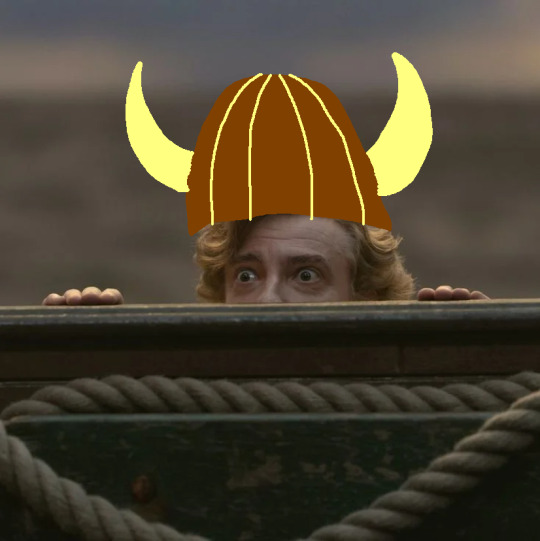
#Solvang#Elk Horn#Absolutely no one asked for this but here you go#I am so very sorry it just sort of slipped out#History#Culture#Bizarrelittlemew
13 notes
·
View notes
Video
youtube
RedLine Fever - International 1486 - NTPA Tractor Pull
Truck and tractor pulling, also known as power pulling, is a form of a motorsport competition in which antique or modified tractors pull a heavy drag or sled along an 11-meter-wide (35 ft), 100-meter-long (330 ft) track, with the winner being the tractor that pulls the drag the farthest. Tractor pulling is popular in certain areas of the United States, Mexico, Canada, Europe (especially in the United Kingdom, Greece, Switzerland, Sweden, Netherlands, Belgium, Italy, Denmark and Germany), Australia, Brazil, South Africa, Vietnam, India and New Zealand. The sport is known as the world's most powerful motorsport, due to the multi-engined modified tractor pullers.
All tractors in their respective classes pull a set weight in the drag. When a tractor gets to the end of the 100 meter track, this is known as a "full pull". When more than one tractor completes the course, more weight is added to the drag, and those competitors that moved past 91 metres (300 ft) will compete in a pull-off; the winner is the one who can pull the drag the farthest. The drag is known as a weight transfer drag. This means that, as it is pulled down the track, the weight is transferred (linked with gears to the drag’s wheels) from over the rear axles and towards the front of the drag. In front of the rear wheels, instead of front wheels, there is a "pan". This is essentially a metal plate, and as the weight moves toward it, the resistance between the pan and the ground builds. The farther the tractor pulls the drag, the more difficult it gets.
Tractor pulling originated from pre-Industrial Era horse pulling competitions in which farmers would compete with one another to see whose teams of draft horses could pull a heavy load over the longest distance. The first known competitions using motorized tractors were held in 1929 in Missouri and Kentucky. Tractor pulling became popular in rural areas across the Midwestern and Southern United States in the 1950s and 1960s. From there it gradually spread to Canada, Europe, and Australia and New Zealand.
Join us as we visit with the owner about his International 1486, which has already won 12 championships this year.
#tractorpulling #tractorpull #tractorpulling2023 #tractorpullfails #tractorracing #tractorpull2023 #tractorpullmishaps #truckpull #tractortv #pulling #tractor #tractors #propullingleague #ntpapull #traktortræk #ostpapull #racetractor #roll #sledpulls #farming #powerfulmachines #store #nation #caseih #ferguson #landbrug #maskiner #john #ford #farm #deere #massey #denmark
3 notes
·
View notes
Text
youtube

Release: March 5, 2005
Lyrics:
Where is the moment we needed the most?
You kick up the leaves, and the magic is lost
They tell me your blue sky's faded to gray
They tell me your passion's gone away
And I don't need no carrying on
You stand in the line just to hit a new low
You're faking a smile with the coffee to go
You tell me your life's been way off line
You're falling to pieces every time
And I don't need no carrying on
'Cause you had a bad day
You're taking one down
You sing a sad song just to turn it around
You say you don't know
You tell me, "don't lie"
You work at a smile, and you go for a ride
You had a bad day
The camera don't lie
You're coming back down, and you really don't mind
You had a bad day
You had a bad day
Well you need a blue sky holiday
The point is they laugh at what you say
And I don't need no carrying on
You had a bad day
You're taking one down
You sing a sad song just to turn it around
You say you don't know
You tell me, "don't lie"
You work at a smile, and you go for a ride
You had a bad day
The camera don't lie
You're coming back down and you really don't mind
You had a bad day
Sometimes the system goes on the blink
And the whole thing, it turns out wrong
You might not make it back and you know
That you could be well, oh, that strong
And I'm not wrong (yeah, yeah, yeah)
So where is the passion when you need it the most?
Oh, you and I
You kick up the leaves and the magic is lost
'Cause you had a bad day
You're taking one down
You sing a sad song just to turn it around
You say you don't know
You tell me don't lie
You work at a smile and you go for a ride
You had a bad day
You see what you like
And how does it feel one more time?
You had a bad day
You had a bad day
Songwriter: Daniel Powter
Had a bad day
Had a bad day
Had a bad day
SongFacts:
"Bad Day" is a pop song by Canadian singer-songwriter Daniel Powter from his self-titled second studio album (2005). It was written by Powter and produced by Jeff Dawson and Mitchell Froom. Powter and Dawson recorded the song in 2002, but were initially unable to find a record label to release it. The song was first used in a French Coca-Cola television advertisement in Christmas 2004 before its official release. Tom Whalley, Warner Bros. Records' chairman and CEO, offered Powter a contract after hearing a demo tape of it. This track ended up being released as the aforementioned album's lead single in Europe in early 2005.
The song was received with a generally mixed reception from critics. While some praised its lyrics for their "universal appeal", others felt they were too broad. Despite this, it was a commercial success. In 2005, the single charted in the top five in more than ten countries worldwide and became the most played song on European radio. After its European success, it was released in the United States where it topped the Billboard Hot 100, Pop 100, Adult Top 40, and Adult Contemporary charts. In 2006, it became the first song ever to sell two million digital copies in the United States, as well as being measured by Billboard as the most popular song of the year inside of the United States, and the first under its new system. After another million were sold, it was certified three-times platinum by the Recording Industry Association of America (RIAA) in 2009. It was certified platinum in Australia, Canada, and the United Kingdom, gold in Denmark and Germany, and also received a certification in France and Japan.
The accompanying music video for "Bad Day" was directed by Marc Webb and became the eighth most-watched music video on the Internet in 2006, reaching 9.8 million views one year after its release. The video depicts two downcast people sharing a similar routine until they meet each other at the end of the video. The song was used for advertisements and television programs, most prominently as American Idol's elimination song. Different shows and artists covered and parodied "Bad Day", including Saturday Night Live and Alvin and the Chipmunks. Powter has also performed the song on television shows including The Tonight Show with Jay Leno and The Ellen DeGeneres Show, and during his concert tours in North America and Europe. The song's success made it Powter's "anthem" and would be included on his later compilation albums B-Sides (2007) and Best of Me (2010).
#Youtube#Spotify#Daniel Powter#Bad day#music#music video#video of the day#hit of the day#youtube video#chaos radi o#good music#2000s#2000s charts#2000s music#2005#pop#alternative indie#rock#lyrics#songfacts#soft rock#pop rock#adult contemporary#piano rock#pop ballad#142
3 notes
·
View notes
Text
Which “Hypocrite, Hegemonic, Fake Democracy Preacher, Double-Faced, Boak Bollocks, Liars, Conspirator & Above International Laws Countries” are Sending Weapons to “Fucked-up Scrotums’ Licker Ukraine?” (USA🇺🇸, UK🇬🇧, Germany🇩🇪, Poland🇵🇱, Netherlands🇳🇱, Canada🇨🇦, Norway🇳🇴, Sweden🇸🇪, Denmark🇩🇰, Finland🇫🇮, Italy 🇮🇹, Australia 🇦🇺, Canada 🇨🇦, Rest of the West and the North Atlantic Terrorist Organization’s (NATO’s)

A U.S. soldier walks past parked armoured vehicles and tanks of the 1st Armored Brigade Combat Team and 1st Calvary Division, based out of Fort Hood, Texas. File photo © AP Photo/Francisco Seco. — Sputnik International
— April 26, 2023
Wednesday marks the one-year anniversary of the creation of the so-called “Ramstein Format” to coordinate the provision of sophisticated Western weaponry to Ukraine in aid of NATO’s proxy war against Russia. Since then, over $70 billion in security assistance has been delivered. What does this aid consist of? Who sent it? Sputnik explores.
"In total, the members of this Contact Group have provided more than $55 billion in security assistance for Ukraine. That’s a tenfold increase since we first met," Pentagon chief Lloyd Austin boasted at a meeting of NATO defense ministers at the Ramstein Air Base in southwestern Germany last week.
Announcing a $325 million package of additional weapons aid, including more ammo for Ukraine’s HIMARS artillery, 105 and 155 mm shells, and “important anti-armor capabilities,” Austin said that the US alone had contributed over $35 billion in “security assistance” to Kiev since February 2022.
Who Has Provided the Most Weapons to Ukraine and ‘Helped’ Kiev the Most?
The Kiel Institute for the World Economy has been monitoring the West’s military, economic, and humanitarian aid to Ukraine since January 2022. According to its figures, between January 2022 and February 24, 2023 alone, the United States has actually committed the equivalent of over $39.1 billion in military assistance to Kiev.
The UK comes in a distant second, devoting $5.97 billion. The European Union and Germany are next, accounting for about $3.25 billion apiece. Poland and the Netherlands are next, accounting for about $2.67 and $2.6 billion, respectively. Norway, Sweden, Denmark, and Canada round out the top ten, contributing between $883.5 million and $1.54 billion, respectively.

Military aid to Ukraine by country (excluding EU institutions) by the Kiel Institute for the World Economy. © Photo: Kiel Institute for the World Economy
Which Other Countries Are Helping Ukraine Militarily?
The abovementioned countries aren’t the only ones that have sent military aid to Ukraine, with over 30 donor countries in total. Among them are Finland, Italy, France, the Czech Republic, Lithuania, Australia, Latvia, Spain, Turkiye, Luxembourg, Estonia, Belgium, Bulgaria, Slovakia, Greece, Croatia, Portugal, Slovenia, New Zealand, Austria, South Korea, and Romania (the latter dozen or so nations have contributed $200 million or less).
Who Has Sent Tanks to Ukraine?
Main battle tanks are among the most expensive and deadly weapons delivered to Ukraine to date. About 16 countries have delivered or approved the delivery of heavy armor. These include hundreds of Soviet tanks, mainly modifications of Soviet T-72s and T-55s, sent by Bulgaria, the Czech Republic, North Macedonia, Poland, and Slovakia, as well as upgraded Cold War-era NATO armor.
This includes over 100 Leopard 1 MBTs sent by Denmark, Germany, and the Netherlands, plus dozens of more advanced Leopard 2A4 and 2A6 tanks (8 committed by Canada, 14 by Denmark and the Netherlands, 18 by Germany, 8 by Norway, 14 by Poland, 3 by Portugal, and 10 by Spain). Sweden has also promised to send 10 of its Leopard 2 mod tanks, known as the Stridsvagn 122. The UK has committed 14 Challenger 2 tanks, armed with toxic depleted uranium munitions, while the US has promised to provide Ukraine with 31 M1 Abrams.
How Much Aid Has Germany Given to Ukraine and What Weapons Have They Sent?
EU economic powerhouse Germany has arguably the most to lose from NATO’s proxy war with Russia, with the closure of a major gas pipeline running through Poland and the destruction of the Nord Stream pipelines last fall robbing Berlin of access to trillions of cubic feet in reliable and competitively-priced Russian natural gas to power its industrial base.
Nonetheless, Berlin has faithfully towed the line on arms deliveries to Kiev, with its $3.9 billion in weapons aid including a plethora of advanced weapons, from Marder infantry fighting vehicles to Panzerhaubitze 2000 self-propelled howitzers, mine clearing and armor recovery vehicles, tank transporters, ammunition for small arms and artillery, explosives, drones and anti-drone weapons, advanced radar, and hundreds of trucks.
What Has Canada Done for Ukraine?
Canada, home to a large Ukrainian minority, has also made effective use of its $1.5+ billion in assistance to pump Ukraine up with weapons, sending armored personnel carriers and armored cars (including the Canadian-built Roshel Senator), as well as anti-tank weapons, howitzers, anti-air missiles, a variety of small-arms, ammunition, and support equipment.

US Defense Secretary: US Expediting Abrams Delivery to Ukraine, Tanks Will Arrive in Germany Soon! M1 Abrams tanks. File photo, Sputnik Internationa. © Sputnik/Sergey Melkonov// Go to the mediabank
How Much Military Assistance Has NATO Sent to Ukraine?
While the North Atlantic Treaty Organization has consistently dismissed Moscow’s allegations that the conflict in Ukraine is a NATO proxy war against Russia, its officials have simultaneously bragged about the billions upon billions in weapons, training, and intelligence support sent to Kiev by the bloc.
"Over the years, NATO allies have provided training for tens of thousands of Ukrainian soldiers. And since last February, NATO allies have delivered more than 150 billion euros [$165.6 billion, ed.] of support, including 65 billion euros [$71.8 billion] of military aid," NATO chief Jens Stoltenberg said at a press conference in Kiev last week, speaking alongside Ukrainian President Volodymyr Zelensky.
“We are now delivering more jets, tanks, and armored vehicles. And NATO’s Ukraine fund is providing urgent support, including medical supplies, mobile satellite systems, and pontoon bridges. All of this is making a real difference on the battlefield every day,” Stoltenberg added.
The NATO chief is not wrong about the arms “making a real difference.” Having sabotaged Russian-Ukrainian peace negotiations last spring, the US and its allies succeeded in staving off a ceasefire, thus ensuring the deaths of tens, if not hundreds of thousands, of Ukrainian and Russian troops and Donbass civilians, all for the sake of what Lloyd Austin admitted was a crusade designed to “weaken” Moscow militarily.
Are Russian Strategic Partners Like China and Iran Supporting Russia Militarily?
At the same time as they have sent tens of billions of dollars in advanced military hardware to Ukraine, NATO powers have accused some of Moscow’s strategic partners, particularly China and Iran, of selling arms to Russia.
Both countries have rejected these claims, with Beijing instead coming up with a 12-point peace plan designed to settle the Ukraine crisis, and Tehran blasting the West for its campaign of the pot calling the kettle black. Last month, Ukrainian military intelligence admitted that it had found “no evidence” of China providing Russia with any arms. Meanwhile, Iran’s Defense Ministry has complained that Kiev has failed to provide Tehran with any documentation whatsoever about the purported use of “Iranian drones” in Ukraine.
How Do Russians Feel About NATO’s Military Aid to Ukraine?
For many Russians, and for Europeans generally, for that matter, NATO’s delivery of advanced weaponry to Ukraine brings up painful memories of Western aggression against Russia historically. As Russian and German media, historians, and politicians pointed out ad nauseam in January after NATO approved sending heavy armor to Kiev, the present crisis is the first time that Russian forces have to face Western tanks in the fields of Ukraine since the Second World War.
“This is an interesting approach you are taking. German tanks in Ukraine against Russia. Your grandfathers already tried this, with the Melnyks and Banderas [Ukrainian Nazi collaborators, ed.]. And what was the result? Untold suffering, millions of deaths on both sides, and in the end, Russian tanks here in Berlin,” Alternative for Germany lawmaker Petr Bystron said during a fiery debate in the Bundestag in January.
#Weapons Suppliers#(USA🇺🇸 UK🇬🇧 Germany🇩🇪 Poland🇵🇱 Netherlands🇳🇱 Canada🇨🇦 Norway🇳🇴 Sweden🇸🇪 Denmark🇩🇰 Finland🇫🇮)#North Atlantic Terrorist Organization (NATO)#“Fucked-up Scrotums Licker Ukraine 🇺🇦”
2 notes
·
View notes
Text
"A vague goal that is decades if not more than a century away does not have all its next moves planned out for you." Prison abolition is a very concrete goal. Second, you just said it was more plausible in the 70s and 80s. "No one has a decent answer for you because it don't exist. " Probably should have figured one out prior to calling for prison abolition. "In the same way that no revolution has its planned marginal tax code figured out I, personally, cannot give you a well planned idea of what we do with murderers and rapists now or in 50 to 100 years. " You have already proposed to abolish the current solution so you'll need to do better than that. "Neither you nor I have the solution to crime nor all the relevant facts regarding percentages of violent offenders whose cases are genuine who has made efforts at rehabilitation etc. etc." uhh...prison's the answer. Duh. "Choosing to do nothing until someone has a white paper that satisfies you is not viable, so it is gradual reform that reduces the need for prisons in other ways until finally all you're left with is the people who are seemingly too dangerous to be otherwise managed." Yes, and those were the people under discussion?
" Frankly, your last line there is exactly what I'm describing. "nordic style prisons" also don't work fully but are a much preferable and more functional solution to the issues that prisons currently imperfectly solve. " Except we can all scroll up and you called to abolish prisons. "Get us down to Danish prison numbers and then we'll see where we are once we've got some breathing room." Again, you called for zero. " However, we cannot just decide we're going to make all the prisons in the US into really nice little apartments like the one for anders brevik. the entire population of the countries doing the nice, upscale prisons is 27 million total. the population of the united states is more than 331 million. the US prison population is close to ten percent of the entire population of Greenland, Norway, Finland, Sweden, Denmark, and Iceland combined. " JFC. We're discussing the few hundred murderers and rapists that you claimed were easier to deal with. Why are you deflecting onto everyone else? "The reason the nordic system of anything works is that there are very few people living there and, most crucially, so importantly, is that most of those nations have a sovereign wealth fund based off the exploitation of their natural resources, specifically oil and gas drilling. This is much the same in Canada. The money to do the meager social programs comes from corporate extractive industries that are then also unleashed upon poorer nations in Africa and S. America. In essence, a form of resource colonialism. " It doesn't matter if it's as 3 x espensive per prisoner if you only have 0.25 x the original number of prisoners though. "And even then, the money to support the cushy prisons, nice healthcare systems, all the nice and good things of the nordic model and to an extent the canadian system, it isn't enough. We see this more with canada due to their larger population of 38 million. the money doesn't go very far when you are a nation that consists of more than a handful of major cities and scattered villages of northmen. Now, this would be somewhat less the case for Canada and for the assorted scandanavians if they reigned in more of their extractive industries profits, but I'm sure you know why that is unlikely to happen." No, I don't see why it's unlikely for this to happen when you actuallly address my actual point and not a thing you like more though.


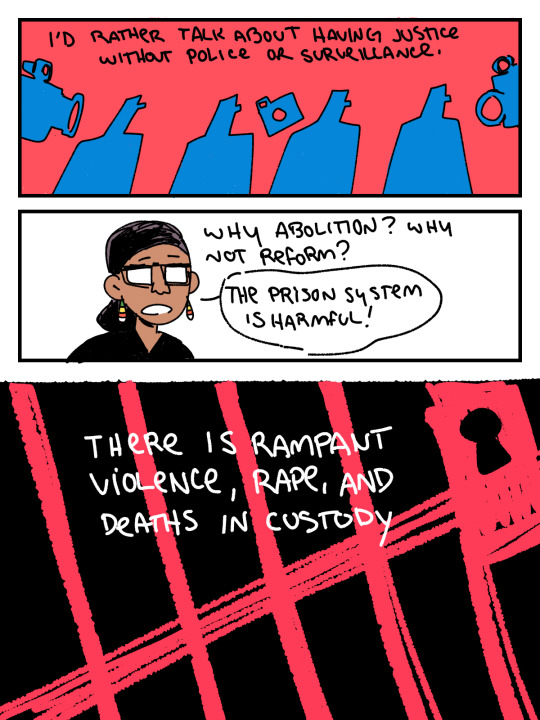

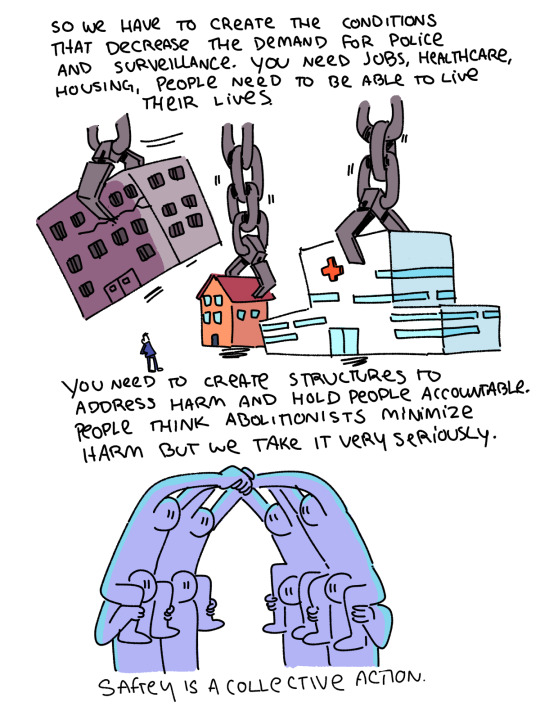


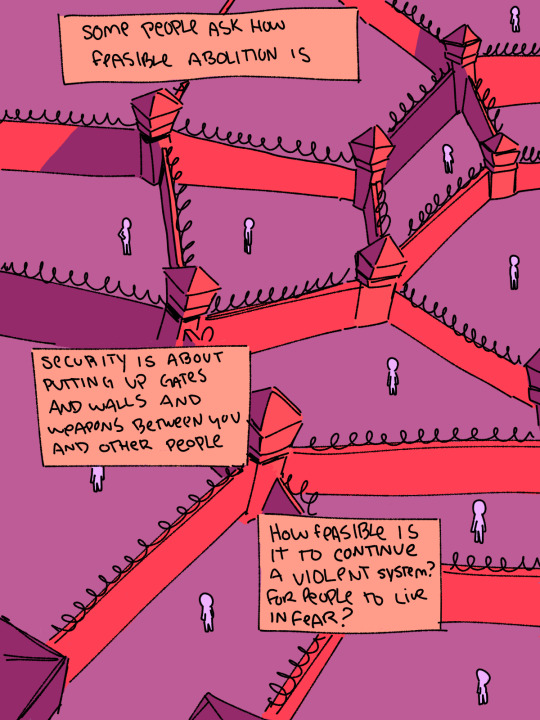
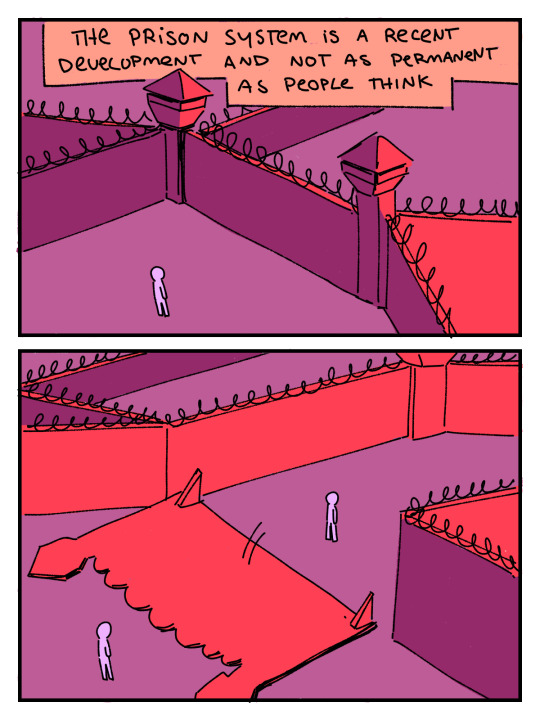
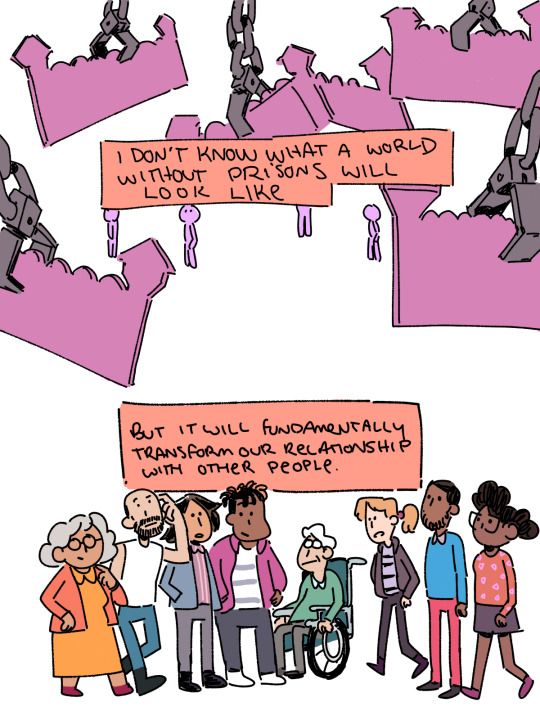
who’s left- Mariame/Prison Abolition
by Flynn Nicholls
42K notes
·
View notes
Text
Friday, January 10, 2025
Carter's 100 years: Food for thought (Politico) “Let’s imagine that Franklin D. Roosevelt had possessed the same gift for longevity as Jimmy Carter, and lived until he was 100. He would have died in 1982, in Ronald Reagan’s second year in office,” John Harris writes this morning. “It is eye-opening to play this same game with others. John F. Kennedy, who was killed just a couple of weeks after I was born, would have been eulogized by President Donald Trump in 2017. Abraham Lincoln would have lived until 1909, after the dawn of aviation. Theodore Roosevelt, who as a small boy watched Lincoln’s funeral procession from his family’s New York apartment, would have lived to see nuclear weapons and the early days of the space race before expiring in 1958.” Old presidents indirectly underline an important point about this country: The United States remains a young nation, in which even events that seem long ago are really just one or two degrees of separation from contemporary lives.
‘Make Greenland Great Again’? No Thank You, Greenlanders Say. (NYT) Christian Ulloriaq Jeppesen remembers how this all started. In 2019, during Donald J. Trump’s first term as president, Mr. Trump floated the idea of the United States buying the island of Greenland. At the time, most people in Greenland (and Denmark, the European country that controls it) thought his suggestion was a joke. “Everyone said, ‘Ha-ha, you can’t just buy a country, he doesn’t mean it,’” Mr. Jeppesen, a native Greenlander and a radio producer, said by telephone. “Obviously that was the wrong way to take it. Look at where we are today.” “For purposes of national security and freedom throughout the World, the United States of America feels that the ownership and control of Greenland is an absolute necessity,” Mr. Trump wrote in late December in a social media post announcing his choice for ambassador to Denmark. Aviaaja Sandgren, a nurse who lives in the small town of Qaqortoq (all of Greenland’s towns are small), does not want to be part of the United States. “We would lose many benefits,” she said when reached by phone on Wednesday. “We have free education, education grants, free health care, and free medicine. Everything is free here in Greenland. I know they don’t have that in the U.S.,” she said.
Harrowing escapes from Los Angeles wildfires (AP) Flames and pillars of smoke rose from both sides of the road and a woman yelled in panic as firefighters ushered a crowd of fleeing residents along. Aaron Samson positioned his 83-year-old father-in-law behind his blue walker, and they began shuffling down the sidewalk. “My father-in-law was saying, ‘Aaron, if we are ever in a position where the flames are right there, you just run and leave me here,’” Samson recounted Wednesday. It didn’t get to that point. For the second time in a matter of hours, a good Samaritan picked them up, then drove them to safety in Santa Monica. Their escape came as thousands of people fled wildfires in the Los Angeles area that turned picturesque neighborhoods into smoldering wasteland. People abandoned their cars and fled on foot as tree limbs crashed down and howling winds sent flames flying in every direction. Others flagged down rides from friends or strangers. With so many cars abandoned in the middle of Sunset Boulevard in Pacific Palisades, authorities had a bulldozer push the vehicles out of the way to clear a path for emergency vehicles.
The most expensive wildfire in US history (Bloomberg) The conflagrations tearing across Los Angeles are on track to be among the most expensive wildfire disasters in US history, draining insurance coffers and threatening California’s massive state-sponsored insurance program. Losses from the fires “could push insurance markets over the brink in California,” said Michael Wara, a senior researcher for climate and energy at Stanford University and a wildfire expert. The Palisades Fire destroyed 300 structures and 13,306 remain threatened. The Hurst Fire, burning northwest of Los Angeles and Burbank, has threatened another 40,000 buildings, while the Eaton Fire burning near Pasadena has endangered more than 28,000 structures. “It is plausible that the Palisades Fire in particular will become the costliest fire on record, period. Not just in California, but in general,” said Daniel Swain, a University of California Los Angeles climatologist, in a briefing on Wednesday. Private forecaster AccuWeather said estimated damage and economic loss is over $50 billion at a preliminary level.
College tuition has fallen at many schools (AP) New research indicates students are paying significantly less to attend public universities than they were a decade ago. And tuition increases at private colleges have finally slowed after years of hefty rises. Figures compiled by the nonprofit College Board indicate the average student attending an in-state public university this year faces a tuition bill of $11,610, which is down 4% from a decade earlier when taking inflation into account. But the real savings come in what the average student actually pays after getting grants and financial aid. That’s down 40% over the decade, from $4,140 to $2,480 annually, according to the data. That reduced cost means less borrowing. Just under half of students attending in-state public universities are graduating with some debt, down from 59% a decade earlier, according to the College Board figures. And among those who do borrow, the average loan balance has fallen by 17%, to $27,100.
Nicolás Maduro faces his toughest challenge yet (AP) Venezuelan President Nicolás Maduro is facing more international rebuke than at any time in his 12 years in power. The self-declared socialist is widely believed to have lost last year’s election by a landslide. That sparked criticism by the United States and others that the vote was stolen and forced Maduro to turn to security forces to repress and arrest opponents. Now he’s set to be sworn in for a third term Friday, even as the opposition challenger who claims to have won is vowing to return from exile by then. The history of Latin America is full of strongmen who rode out disputed elections only to find themselves ousted in short order.
A Russian missile attack in southern Ukraine has killed at least 13 (AP) A daytime Russian missile attack on the southern Ukraine city of Zaporizhzhia killed at least 13 civilians and wounded over 100 others on Wednesday, officials said. Russia has frequently launched aerial attacks on civilian areas during the almost three-year war. Thousands of civilians have been killed in Europe’s biggest conflict since World War II. Earlier, the Ukrainian military said it struck a fuel storage depot deep inside Russia, causing a huge blaze at the facility that supplies an important Russian air base. Ukraine’s General Staff said the assault hit the storage facility near Engels, in Russia’s Saratov region, about 600 kilometers (370 miles) east of the Ukrainian border. Ukraine has been developing its arsenal of domestically produced long-range missiles and drones capable of reaching deep behind the front line.
Making art and fun from the ice, snow and freezing cold in Harbin, China (AP) People are making the best of the freezing weather in northeast China: Sculptors have finely chiseled ice into elaborate structures resembling landmark castles and temples, and visitors are appreciating the artwork and the excitement of ice slides and other attractions at the annual Harbin Ice and Snow World. The ice sculpture festival is a major tourist draw for the former industrial center that still boasts of its proximity to Russia with Tsarist-era architecture found nowhere else in China. The riverside site features dozens of giant artworks like the Taj Mahal of India, the Osaka Castle of Japan, and Beijing’s own Temple of Heaven, all carved from clear blocks of ice. The main festival covers 1 square kilometer (.6 square miles) of the city, with the sculptures using 13,000 cubic meters (460,000 cubic feet) of ice blocks cut mainly from the adjacent Songhua River. Ice slides, with the longest ones reaching 521 meters (1,710 feet), are a key attraction, with visitors waiting almost an hour to get their chance.
Filipino Catholics pray for good health and peace in huge procession venerating Jesus statue (AP) Hundreds of thousands of mostly barefoot Catholic worshippers marched Thursday in an annual procession in the Philippines that venerates a centuries-old black statue of Jesus. Some said they prayed for good health for their families, an end to tensions in the South China Sea, and for incoming U.S. President Donald Trump to be kinder to Filipino immigrants. The procession marks the feast of Jesus Nazareno and is a major annual Catholic event in Asia. The procession in Manila began before dawn, with organizers putting the early crowd at around 250,000. Their number swelled later in the day, but there was no immediate updated crowd estimate. Last year, at least 2 million devotees joined the 15-hour procession, with some estimates of the crowd as high as over 6 million. Many devotees believe the statue’s endurance, from fires and earthquakes through the centuries and intense bombings during World War II, is a testament to its miraculous powers.
Better late than never (Foreign Policy) The Lebanese Parliament voted to elect U.S.-trained Gen. Joseph Aoun, the commander of the Lebanese Armed Forces, as the country’s new president, ending years of political deadlock in the troubled country. Aoun received support from across the political spectrum, including from Hezbollah lawmakers, in a sign of the group’s diminished position following a bruising war with Israel. Hezbollah had thwarted multiple previous efforts to elect a new president by withdrawing its lawmakers from Parliament, collapsing the necessary quorum.
Syria’s economic disaster (Economist) There are few tougher jobs in Syria. On December 30th the country’s interim government named Maysaa Sabrine to head the central bank. The institution Ms Sabrine leads, like the Syrian economy, is a shambles. Foreign reserves are thought to have dwindled to as little as $200m, less than a month’s worth of imports. The central bank is under Western sanctions. So is Syria’s largest commercial bank. The Syrian pound has lost 99% of its value since the start of the civil war in 2011. At 13,000 pounds to the dollar, a quick trip to the market requires bags full of banknotes. Economic mismanagement was a defining feature of the Assad regime, which ruled Syria for 53 years. Civil war pushed Syria even further into misery. GDP fell from $60bn in 2010 to less than $9bn today. The World Bank reckons that 69% of Syrians live on less than $3.65 a day.
As Russia seeks influence in Africa, former students play central role (Washington Post) The young West African students touched down in what was then the Soviet Union knowing only a handful of Russian words and little about their new home. Decades later, those former students—many of whom became doctors, engineers and businesspeople in West Africa—are key influencers for Russia as it vies with the West for sway in this turbulent part of Africa. In interviews in Burkina Faso, which has become a focus of Russian outreach, the former students said they are fostering economic, educational and diplomatic ties as they help their country move away from generations of working with the West and toward partnership with Russia. “We studied there and know the potential,” said Christian Ouédraogo, who arrived in the Soviet Union in the late 1980s and now leads a Russian-Burkinabe business club. “We want to play our part—to sit down at the negotiating table and accompany authorities so that this partnership is win-win and enables real growth for our nations.”
The world’s most powerful passports for 2025 (CNN) Who’s the itty-bitty city-state with the global passport the world thinks is great? There’s new year cheer for Singapore as it reclaims its place at the top of a quarterly ranking of the world’s most powerful passports. Holders of this desirable red travel document enjoy visa-free access to 195 out of 227 destinations worldwide, according to the Henley Passport Index, more than citizens of any other place on the planet. Japan is second in the ranking, with an open door to 193 destinations. The EU member states of France, Germany, Italy and Spain are at No. 3, along with Finland and South Korea, with access to 192 destinations with no prior visa needed. The fourth position in the rankings is a testament to the power of the European Union’s border-free Schengen area, which guarantees free movement to more than 425 million EU citizens. It’s held by seven EU countries, each with visa-free access to 191 destinations: Austria, Denmark, Ireland, Luxembourg, Netherlands, Norway and Sweden. Squeaking into fifth place are five countries—Belgium, New Zealand, Portugal, Switzerland and the United Kingdom—all of which have visa-free access to 190 destinations. The United States shares ninth place with Estonia.
1 note
·
View note
Text
MONS, Belgium—It was the summer of 2022. Russian President Vladimir Putin’s full-scale war in Ukraine was 6 months old. NATO officials feared more than ever that they would one day have to send hundreds of thousands of troops to fight and die against the Russians.
With war on NATO’s doorstep, the alliance faced an existential question: Was it up to the job of defending every square inch of its turf? Christopher Cavoli, the four-star U.S. Army general tapped as the alliance’s military chief that July, decided it wasn’t.
Cavoli ordered his top lieutenants to come up with a plan to transform Supreme Headquarters Allied Powers Europe (SHAPE)—NATO’s military headquarters in Mons, Belgium, which had lost most of its power after the Cold War—into a proper war command center.
“His initial guidance and direction that started all of this was: I need to be able to command,” said Col. Bryan Frizzelle, the project manager for SHAPE’s strategic warfighting headquarters.
The effort to remake the alliance’s headquarters is just one element in the most ambitious military reforms that NATO has embarked on in years. NATO is growing the size of its response force by eightfold. The war room in Mons has been remade to call up troop reinforcements and map out long-range military strikes on Russian soil even before a war breaks out. For the first time, NATO forces are exercising those brand new war plans in Europe’s hinterlands this spring.
The plans could take years more to put in place. “We are talking decades—potentially plural,” said Becca Wasser, a senior fellow for the defense program at the Center for a New American Security, a Washington-based think tank.
But the war in Ukraine is already 2 years old. Most NATO nations are struggling to boost defense spending and produce artillery shells. Russia’s military is reconstituting faster than anyone expected. And the United States is just nine months away from a presidential election in which the Republican front-runner, former U.S. President Donald Trump, is already openly questioning whether the United States would help enforce Article 5—the self-defense clause at the heart of NATO—if he is elected as U.S. president.
All of this means that the alliance may not have decades to get its act together. “That’s the open question,” Wasser said. “Does NATO actually have that time?”
The first thing you see at SHAPE is the bunker. Built in 1985, when NATO’s military headquarters had a Soviet nuclear target on its back, the massive concrete structure looms over the parking lot. It’s not built to withstand a modern Russian nuclear blast—you can’t dig deep enough to shelter from that—but it’s a symbol of what SHAPE used to be at the height of the Cold War: the central nervous system of NATO’s 3 million troops and 100 army divisions in Europe.
It’s also where a group of NATO planners from a half-dozen countries took the first steps toward rebuilding the sleepy military command. As the Kremlin was building up more than 100,000 troops to invade Ukraine in late 2021 and early 2022, NATO scrambled jets, rolled tanks, and hardened the eastern flank with more than 8,000 troops from 30 countries. NATO once again needed a central nervous system to command them.
Anyone who worked at SHAPE had an open invitation to join a planning session in the bunker on a Saturday afternoon in late fall of 2022. Few did. Of the nearly 3,000 people who work at SHAPE, just 30 people showed up. That ragtag group of volunteers who committed to work nights and weekends became the so-called “Tiger Team” that would remake—and is still remaking—NATO’s military headquarters for war.
The team members came from all over the headquarters and hailed from all across Europe, including Denmark, Lithuania, and the United Kingdom. Some got roped in on long email chains by their bosses. Some told their colleagues about it and convinced them to join. Frizzelle told a few of them himself. Kenneth Boesgaard, a Danish special operations officer, found out the agenda had very little to do with special operations, but he went anyway. The fear of missing out was too strong.
They didn’t waste any time. Led by a three-star French Army general, they went right after NATO’s sacred cows. The two-hour discussion became the foundation for a series of “hard truths.” SHAPE was no longer useful. It was built for peacetime, not to fend off a Russian attack. It was no longer “fit for purpose,” Frizzelle said.
The group had homework: to deliver an update to Cavoli in just eight weeks, cutting through four ranks in the chain of command. And they had only four full-time planners.
By December 2022, they had written a first draft of SHAPE’s new job description. It had about a half-dozen major bullet points. It included planning for war as well as resourcing and commanding it. SHAPE also still had to advise NATO Secretary-General Jens Stoltenberg on military policy and take the 31-nation political commitments that come out of NATO summits—carefully worded and littered with diplomatic jargon—and turn them into military reality: sensors, shooters, troops, and brigades on the ground.
Then they had to get the rest of the headquarters to buy in. “[In] NATO, you’ve got to build consensus,” said Lt. Col. Alex Price, a British Army officer involved in the project. “I’ve learned that the hard way.” The Tiger Team didn’t need any convincing. But the biggest problem was getting the rest of SHAPE to understand what a “strategic warfighting headquarters” was supposed to do.
The job of the command is to say who goes where—whether it’s a bomber, a fighter jet, or a rocket artillery system—and what they’re going to hit. For years, it was the other way around. NATO’s three joint force commands, which are meant to divide up responsibility for security in Europe and across the Atlantic Ocean and report back to Mons, did most of SHAPE’s job for it. They ran the show in the wars in Bosnia, Kosovo, Libya, and Afghanistan, where NATO’s military might was mostly delivered in airstrikes, not boots on the ground to stop Russian tanks.
By the time Putin invaded Ukraine, about 80 percent of SHAPE’s work was reporting to Stoltenberg, NATO’s civilian leader. “We were not in charge,” said French Army Lt. Gen. Hubert Cottereau, SHAPE’s vice chief of staff, who oversees the headquarters transformation effort.
That worked in the small wars of the 1990s. But computer simulations quickly made it clear that that approach wouldn’t work on a larger scale. In one digital exercise in September 2022, officials at Naples, Italy, the hub of NATO’s naval forces, and Brunssum, Netherlands, the nerve center for NATO ground troops, told SHAPE to step aside: Just give them the shooters, sensors, and troops, and they would plot out the targets.
Once the simulated bullets started flying in NATO’s digitized war with “Occasus”—a bloc of four fictional Russia-like countries—the lower-level commanders hit a wall. Who would prioritize the main effort? Who would give them the resources? And who would call up the reserves?
They needed SHAPE to do it.
Cavoli didn’t go easy on the Tiger Team. The group had missed a key bullet point: strategic targeting. If Putin ever ordered Russian troops onto NATO soil, Cavoli knew he would need to be able to strike back, hitting targets deep inside Russia to paralyze the Kremlin’s war industry and break their logistical chains.
Dating back to the end of the Cold War, most NATO countries wanted to make nice with Russia. Few were comfortable with identifying military targets in the Kremlin’s backyard, fearing that first Boris Yeltsin, and then Putin, would see it as warmongering. So they gave that power away.
“We discovered that SHAPE actually in peacetime had no targeting authorities because that was politically sensitive,” Frizzelle said. If a war had broken out, NATO military planners would have had to start planning out Russian targets from scratch.
Ukraine changed everything. In the summer of 2023, during the annual summit in Vilnius, Lithuania, the alliance unanimously granted SHAPE the ability to conduct targeting. Now, for the first time since the end of the Cold War, SHAPE is using that authority—in peacetime. NATO planners are deciding what would be valid targets on Russian soil, plotting them out for Naples, Brunssum, and NATO’s U.S.-based command in Norfolk, Virginia, and running the potential bull’s-eyes through all of the legal traps.
Cavoli needed to get NATO’s eyes on the target, too. Until last summer, SHAPE’s around-the-clock watch center had only a dozen seats. After a three-month construction project, the center now fits a workforce of 85 people, seven times as big as it was.
Left: SHAPE’s new headquarters appears under construction in Mons on March 21, 1967. Keystone-France/Gamma-Rapho via Getty Images Right: NATO Secretary-General Jens Stoltenberg (second from right) walks with outgoing and incoming Supreme Allied Commander Europe generals toward a change-of-command ceremony at SHAPE in Mons on May 4, 2016. Thierry Monasse/AFP via Getty Images
It’s not just a watch center, though. Officials see it as a nerve center of all of NATO’s military operations. By putting all of the experts in one room, within a few minutes, a few chair swivels, and a couple of phone calls, the new multidomain operations team can quickly give Cavoli and his aides-de-camp everything they need to respond to a Russian attack.
“Let’s say there’s a report of a Russian rocket or part of a drone landing in Romania,” Frizzelle said. “The senior watch officer can turn around in her chair and say, ‘OK, we have this report. Give me the geographic subject matter expert.’” They can brief Cavoli within a few minutes of getting the alert.
They’re still getting all of the right people in place. In a crisis, there’s no time to be flipping through the phone book; SHAPE needs officers in the bunker who can immediately direct it to NATO’s land, air, and maritime commanders. The idea is to be able to connect from Mons to a shooter on the eastern flank if war breaks out—almost instantly.
“The key to effective deterrence is the demonstrated capability to inflict real pain on Russia,” said Ben Hodges, a former head of U.S. Army Europe who is now a NATO senior mentor for logistics. “If you want to prevent the Russians from making a terrible decision, then that means we have to be able to move as fast—or faster—than them.”
Two years into Russia’s invasion, NATO nations have now put 150,000 ground troops on the eastern flank. But NATO has no troops of its own. It has no tanks. It has no fighter jets. It’s the job of each country to get its troops, tanks, and planes ready to go when the alliance asks for them.
“The biggest catastrophe can be summed up in two words,” Cottereau said. “Too late.”
For decades, SHAPE had very little power over troops in NATO countries. But Russia’s invasion prompted those nations to give Cavoli more authority. He can adjust the level of air defense cover in Europe. He can move NATO’s two standing maritime task forces at sea. He can scale up the eight battlegroups on Russia’s border from battalions, with just over 1,000 troops, all the way up to brigades, which are at least three times that size. Some of them are already on the way.
Cavoli still can’t order troops to fire, but he can order more troops to move into place—or get ready to move. And he now has at his command 300,000 troops ready to exercise and respond to a crisis—almost eight times what he had before the war. It’s called the Allied Response Force.
Once it’s activated in July, the newly readied force will be trained twice a year: once for a pre-crisis simulation and again for an out-of-area operation that simulates a real war. The aim is to send a clear message to Russia: Keep out.
“Every ship that sails, every aircraft that flies, every tank that rolls sends a message,” said Gunnar Bruegner, the one-star German general who serves as assistant chief of staff to Cavoli for developing and training NATO’s forces. “We are ready.”
The new force is intended to be the tip of NATO’s spear, similar to the U.S. Army’s 82nd Airborne Division, the Pentagon’s on-call force of paratroopers that deployed to Afghanistan for the 2021 evacuation effort and then served as the boots on the ground in Poland when Russia’s full-scale assault on Ukraine started.
The next stage is to keep a larger reserve of forces prepared for an Article 5-level war, distinct from the eastern flank battlegroups, that would be the size of somewhere between the 300,000-troop rapid response force and the 3.2 million-plus troops in NATO’s 31 militaries. Each unit will be assigned its own patch of dirt to defend and will exercise based on NATO’s war plans. Cavoli could order some of those troops to be ready immediately, more at a month’s notice, and even more in six months.
“That’s the kind of process we’re going through now,” said a NATO official, who spoke on condition of anonymity based on ground rules set by the alliance. “[We’re] going to allies and saying, ‘What have you got? What could you stick on the table in an Article 5 situation?’”
Although defense spending in Europe has grown by almost a third in the past decade and as many as 20 countries could hit the alliance’s 2 percent defense spending target this year, there’s an ongoing give-and-take. In NATO, members have the control button by providing the money and the troops. Just one ally saying “no” can cause a major headache. Greece refused to participate in airstrikes on the former Yugoslavia in the 1990s. During NATO’s 2011 intervention to shut down Libya’s skies, Germany refused to provide its early warning aircraft.
The NATO official said European nations are going to have to invest more in weapons systems and training that they’ve been leaning on the Americans to provide, such as air and missile defense, long-range artillery and missiles, command and control, and land combat formations.
And the biggest question mark is Trump. Again the Republican front-runner in the 2024 election, the former president is publicly throwing cold water on NATO’s self-defense pledge. If European nations don’t pay up for defense, he said at a campaign rally this month, he would encourage Russia to attack them. (NATO officials fired back: While the alliance gives nations a defense spending target, it is not a dues-paying group. “This is not a country club,” Julianne Smith, the U.S. ambassador to NATO, told CNN.)
Trump’s rhetoric might not have been an existential issue for NATO in the days of voluntary operations such as Kosovo and Libya. But after Russia’s invasion in Ukraine, everything has changed.
“Article 5 is fundamentally different,” the NATO official said. “Everybody is on the hook.”
When he was Estonia’s defense chief, between 2016 and 2017, Margus Tsahkna and his aides counted more than 120,000 Russian troops massed on the other side of the country’s Baltic border. Putin could send those troops into battle within 24 to 48 hours. “All that was needed was the command from the Kremlin,” said Tsahkna, now Estonia’s top diplomat.
The invasion never came. Today, two years after Russian troops began to roll over the border into Ukraine, most of the soldiers arrayed against the borders of the three former Soviet nations on NATO’s eastern flank—Estonia, Latvia, and Lithuania—are gone. Many of them have fought and died in Ukraine.
It may not be an all-out invasion of the Baltic states that’s coming. After all, more than 315,000 Russian troops have been killed or injured in Ukraine. It could be a hybrid attack, too—cyberattacks, the cutting of pipelines, or a limited invasion to undermine Western confidence in Article 5 that’s already been damaged by Trump. But either way, there’s a growing fear in the West that Russia is already picking itself up off the mat much faster than anyone expected.
The question is not just when a Russian attack might come but where.
“[Putin] will continue. He must continue the aggression. He needs to have a new conflict somewhere,” Tsahkna said. “Testing NATO, is it Estonia, Latvia, Lithuania, Poland? I don’t know. [But] it’s not even a question.”
Estonian officials believe that Putin is planning to put two to three times more firepower against the borders with Estonia, Latvia, Lithuania, and Finland than it did before the Ukraine war. And Putin is making up for Russia’s combat losses, expanding the size of the military to more than 1.3 million troops, only a bit smaller than the U.S. armed forces.
NATO planners said last October that they were following expert estimates that Russia could reconstitute in a three-to-five-year period after the shooting stops in Ukraine, with Russian land forces degraded but much of the rest of the military intact. But Russia’s military comeback has accelerated. Some European officials now believe Russia could attack NATO directly. This month, Denmark’s defense minister said Russia could test Article 5 within three to five years.
So NATO’s planning has accelerated, too.
This year’s ongoing Steadfast Defender exercise, which started in January and won’t end until May, will top out at 90,000 troops—only about a quarter of them American. Marines from three countries will ship out of Norfolk aboard the USS Gunston Hall and launch an amphibious assault to take back the beaches of Norway. Then NATO’s highest-readiness troops will assault across the Vistula River in Poland.
It’s the alliance’s biggest military demonstration in 36 years. “If you’re Russia, you might say: ‘I can attack this spot here now, and maybe I’ve got a temporary advantage,’” the NATO official said. “But the knowledge that we can and will bring basically two full American corps to Europe—and they will fight—that is a pretty big deterrent.”
Another key reason for doing large-scale exercises so soon after Cavoli’s team put the plans on paper is to see what works and what doesn’t. How do you move land forces across Europe? How do you supply them? And when the shooting starts, will they arrive in time?
“There might be a big attack coming on NATO,” Bruegner said. “It gives you the bloody truth about what you really are capable of doing.”
Back in Mons, dozens of military officers from NATO countries huddled in the SHAPE bunker in October 2023 to test their latest plans in a 10-day exercise dubbed “Steadfast Jupiter.” This time, they were fighting off a fictional invasion of Eastern Europe from Occasus, their Russia-like foe.
In the end, SHAPE received more than a passing grade. The allies didn’t steamroll their enemy but degraded Occasus enough to the point that the mock conflict could end at the bargaining table.
Every three to four months, Frizzelle’s team emerges from the bunker to present Cavoli with another set of recommendations to change the SHAPE headquarters, each time wrenching down on more problems. In the October exercise, Cavoli and his team realized their rules of engagement were too strict—better suited for Afghanistan than Article 5. So they tweaked them.
Their next assignment is to present their work to all 31 NATO allies—and Sweden—at the upcoming Washington summit in July. It’s a chance for the civilian brass to grill Cavoli. “How far are we? How good are we at being able to execute the plans?” said Royal Netherlands Navy Adm. Rob Bauer, the chair of NATO’s Military Committee.
In the meantime, they’ve got more homework to do. SHAPE’s experts are still looking at how to optimize intelligence gathering, integrating artificial intelligence into the headquarters, and building out their own wargaming capability, with a team of experts who live, breathe, eat, and sleep Russian tactics as the “red team” on the other side.
The tweaking will continue as long as Cavoli is NATO’s military commander—at least for the next year and a half. But they’ll never be 100 percent sure that the war plans will work until the first shot is fired in an actual war.
“We’ve built an airplane—the new strategic warfighting headquarters,” Frizzelle said. “It’s informed by the blueprints of airplanes that have flown well in the past. But until we fly the airplane, we don’t know how it’s going to handle. We don’t know if we’ve forgotten a part.”
“Hopefully,” he added. “We haven’t.”
12 notes
·
View notes